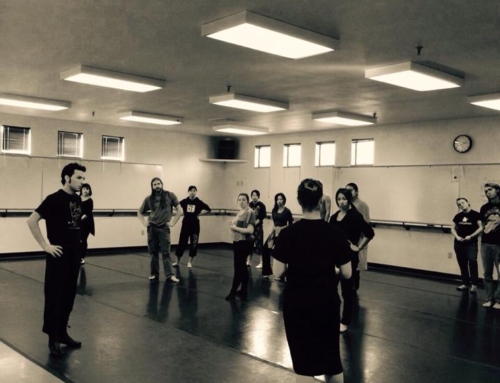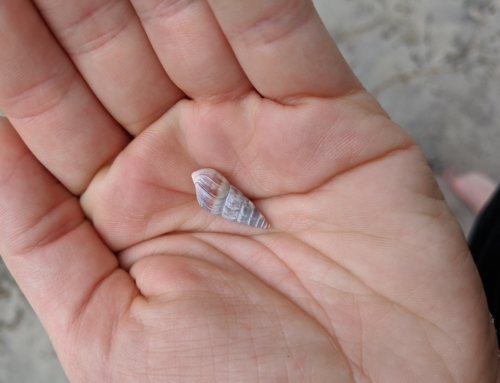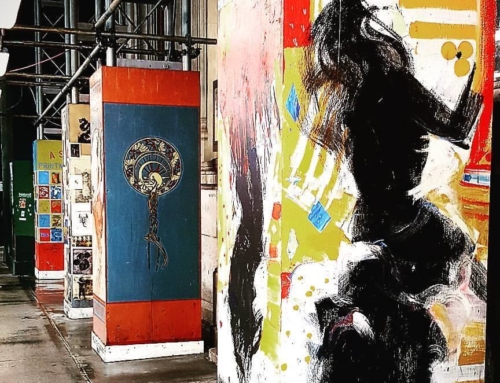Someone said to me the other day: why don’t you rent studio space at X studio and teach classes there, you know the owner is very collaborative. Wait, what? What does collaboration have to do with where I rent studio space to teach? I pay that person X amount to use the space for X amount of time—sorry, is it just me?—I’m missing where the collaboration is happening…
This brings me to part 2 of a blog about two words I am absolutely sick and tired of hearing, mostly because they are misused—collaboration and community.
Collaboration.
Again, let’s start with a definition. Collaboration means working together to reach a common goal.
Now, here’s the thing, within a collaborative project, you can have a leadership structure. But using someone or hiring someone to do a job is not necessarily collaborative. When you hire a contractor to install new counter tops, even though he or she is working in your house, and you probably chose the color and material of the countertops, that is not what I would consider a collaboration. You hired them to do a job, hopefully they do it and do it well.
Taking advantage of someone’s skills and then calling it a collaboration so you don’t have to pay them, or pay them less, is not a collaboration either…I’m just saying.
Now, things can get a little grey on projects with multiple contributors. Is it a collaboration if you dole out tasks and each complete your task separately, and all the work becomes part of the larger whole? In the arts, I would say no. That’s simply distributing the work. I think collaboration begins when you come together with other creators without knowing all the answers, but having a common intention, though multiple perspectives.
In a masterclass with Anne Bogart (Viewpoints) last year at YoungArts, she talked about how important it is for her as a director to get input from the actors she works with. She gave the example of asking members of the chorus of an opera what they thought some of the staging should be. Simply asking for their opinion, and seriously taking it into consideration, completely shifted the energy of the rehearsal space, with every member of the cast suddenly more engaged with the work. When everyone has a voice in the creative process, collaboration happens (and cast members become more invested in the work and build camaraderie). Of course, at the end of the day, Bogart as director can make the decisions, but she has more possibility to choose from, and a more engaged cast, through these small gestures of collaboration.
I’ve been reading about S. Paola Lopez’s work with the Institute for Improvisation and Social Action (ImprovISA). Lopez uses improvisatory collaboration for social action. The key to her work is creating a space where it’s not about individuals showing off what they can do, but a group coming together to create something new, to constantly develop and grow. Assignments cannot be doled out in this situation—instead, the individual becomes hyper aware of the group and how they can add to the group and the goal. It’s not about “me,” it’s about “us” making something together, in the moment, and in this case, through interdisciplinary improvisation.
Collaboration is about creating together. Usually, about creating something new together. I can say for Abrepaso, there is a leadership structure—at the end of the day, I make the decisions as artistic director/producer. It’s my name, my investment that is on the line. But in the process, we have moments of complete collaboration, moments of led collaboration, and sometimes we have tasks doled out, or a straight-up hierarchy where I tell people exactly what to do. Overall, we are all building towards a common vision, and there is room for that vision to shift depending on what the various members suggest—and the ideas develop through this sharing into something beyond what I initially imagine as producer/director. Yes, to a certain extent, I am hiring people to do jobs—to commission music is to hire someone to do something for you. But there’s a development process in that where I work with the composer to build the ideas, to share different perspectives—grow our ideas together. I don’t write the music, but we are engaged in a process together. That means, at the end of the day, I am open to shift, to development, to growth, to letting the work become its own entity far beyond what I could have imagined alone. And I choose my artists based on their openness, willingness to challenge themselves, creativity, and ability to work together.
Collaboration is a buzz-word right now. But there’s nothing wrong with NOT collaborating—with hiring people to do specific tasks. Personally, I find it less fulfilling than collaborating, but there’s definitely nothing wrong with it. So, let’s just make sure, when we call someone a collaborator, or say we’re collaborating, we really mean it—we’re really creating something new and unique together.









Leave A Comment